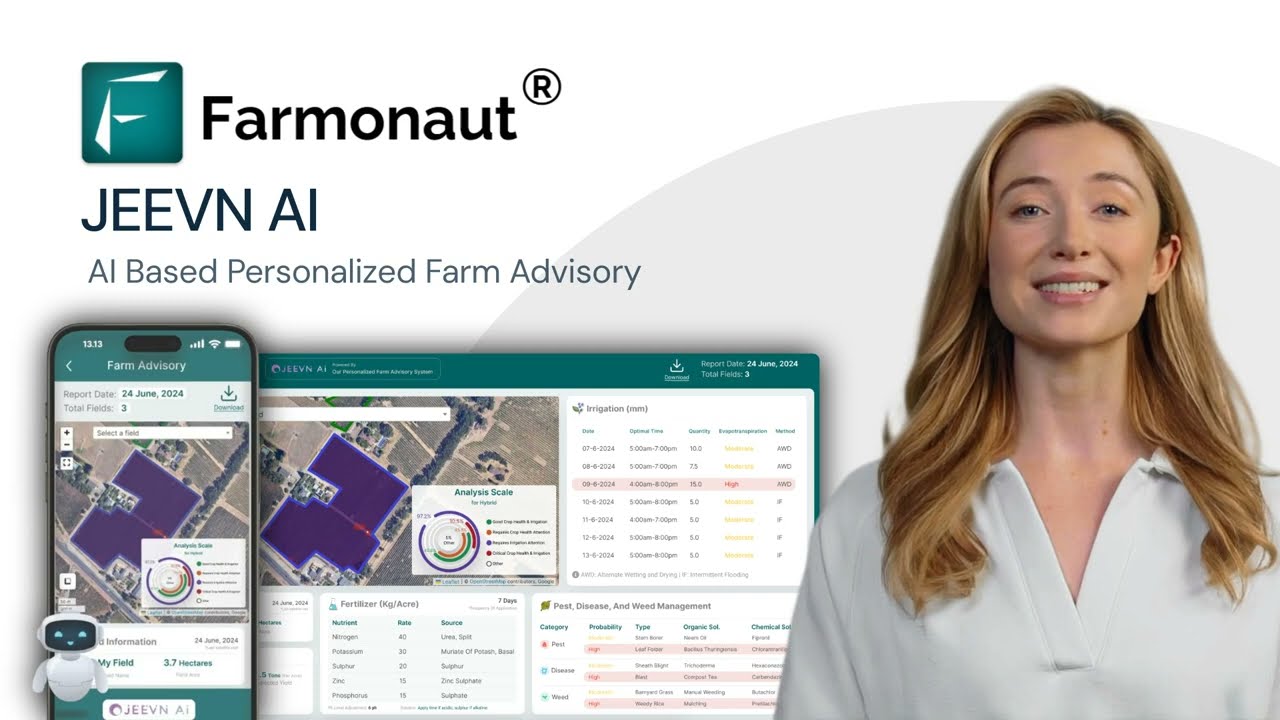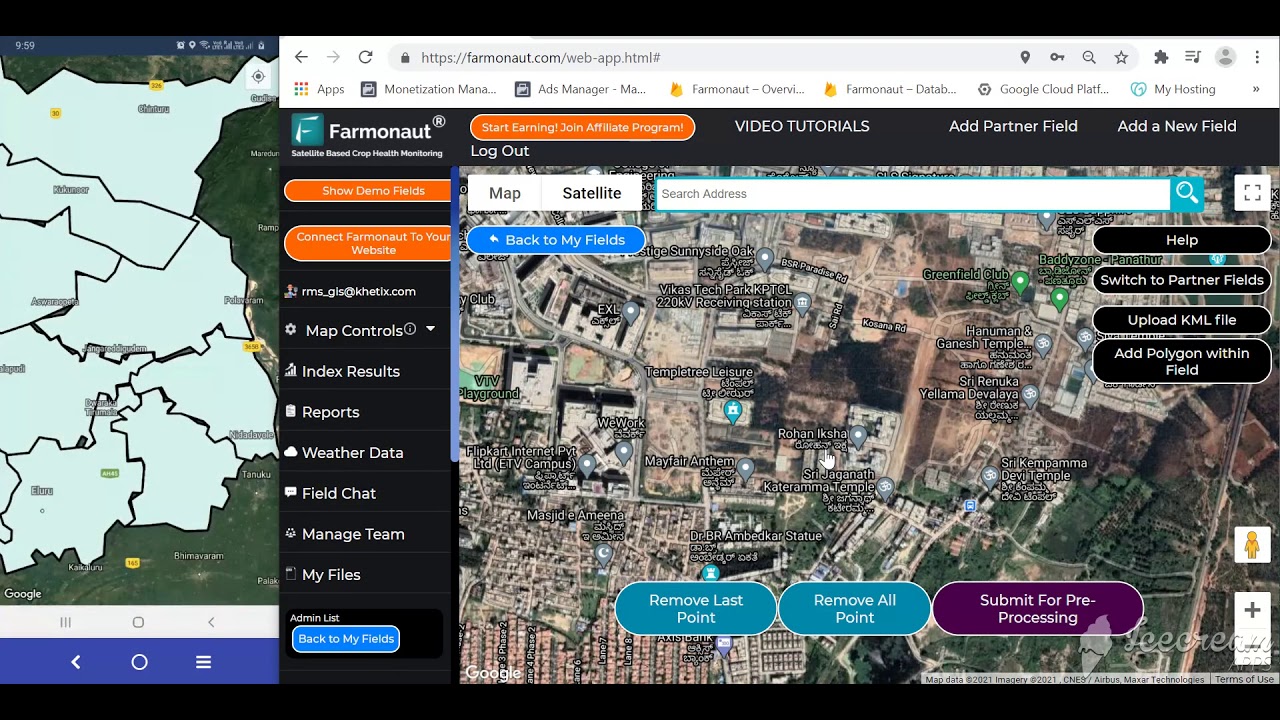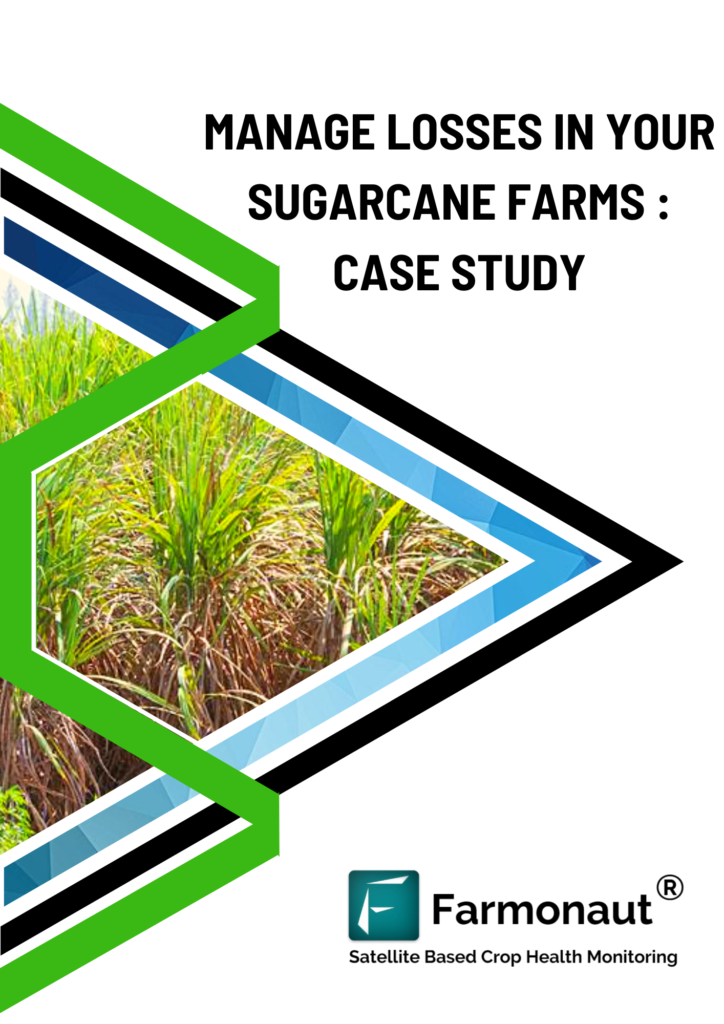Family Farm Business Succession Plan: 7 Key Strategies
- Introduction
- The Importance of Farm Succession Planning
- 1. Building a Strong Management Team
- 2. Selecting the Right Successor
- 3. Developing a Comprehensive Transition Plan
- 4. Addressing Financial Considerations
- 5. Utilizing Digital Tools for Farm Succession Planning
- 6. Managing Emotional Dynamics
- 7. Continuous Review and Adaptation
- Succession Strategy Comparison Table
- Involving External Advisors in Your Farm Succession Plan
- Balancing Family and Business Goals
- Legal and Regulatory Compliance in Farm Transition
- How Farmonaut Empowers Farm Succession Planning
- Frequently Asked Questions
- Conclusion
Introduction
Family farm business succession planning is the process of preparing for a secure, sustainable transition of management, assets, and leadership to the next generation. This agricultural business succession is not just about the transfer of ownership and operational responsibilities—it’s about preserving a legacy, maintaining business viability, and aligning both family and business goals.
With rising land values and an intensifying demand for modernization, effective farm succession planning is essential to maintain continuity, protect family unity, and ensure that farming operations can sustain and grow into the future. From financial planning and legal documentation to training successors and addressing emotional dynamics, this comprehensive guide covers the most critical strategies every family farm should implement.
The Importance of Farm Succession Planning
A formal farm succession plan is crucial for several reasons:
- Ensures generational continuity: Provides a clear path for transferring roles, assets, and operational knowledge between generations.
- Reduces conflicts: By clarifying decisions regarding successors, transfers, and financial matters, families can minimize disputes over ownership, leadership, and inheritance.
- Prepares for emergencies and unforeseen events: Without a plan, an unexpected illness or death can threaten farm viability and disrupt daily operations.
- Optimizes tax and regulatory compliance: Proper planning allows families to take advantage of tax-saving strategies and meet all legal requirements.
- Sustains business growth: An effective plan supports ongoing farm development, operational adaptation, and the pursuit of new opportunities.
Only 30% of family farms successfully transition to the next generation due to inadequate succession strategies. With these statistics in mind, it’s clear why planning for future farm operations is a non-negotiable aspect of long-term sustainability.
1. Building a Strong Management Team for Farm Succession
A resilient management team is the cornerstone of every successful family farm transition. This strategy involves more than identifying future leaders; it’s about creating an environment that empowers all team members—across generations—to collaborate, learn, and adapt.
Key Components of a Robust Succession Management Team
- Team Approach: Move away from a single-decision-maker model. Encourage all members, including incoming successors, to participate in strategic planning and collaborative decision-making.
- Skill Development: Implement training programs that expose current and future leaders to every aspect of farm operations—from financial assessment to production and marketing management.
- Cross-Training: Give successors practical experience in various responsibilities to broaden their operational knowledge. Rotate roles regularly for exposure to decision-making, problem solving, and crisis management.
- Effective Communication: Hold regular, structured feedback sessions and unbiased evaluations. This not only reveals strengths and weaknesses but also fosters transparency and trust.
Building a management team is about more than developing leadership skills—it’s an investment in the farm’s continuity, succession, and sustainability.
2. Selecting the Right Successor in Succession Planning
A key decision in agricultural business succession is choosing the most suitable successor. The person (or team) who will assume leadership and manage future farm operations should be evaluated with objectivity and vision.
Considerations for Selecting a Successor
- Skills and Experience: Does the candidate have hands-on experience and operational knowledge in core farm functions (crop management, financial planning, resource management)?
- Interest and Commitment: Is there a genuine passion for farming and a willingness to embrace leadership responsibilities?
- Leadership Qualities: Does the individual display solid decision-making, resilience, effective communication, and the ability to lead a team?
- Openness to Innovation: Can the successor adapt to new technologies and implement digital tools like satellite-based crop monitoring or farm management software?
- Family Harmony: Can the chosen successor promote unity, fair opportunities, and compassionate leadership within the family structure?
To facilitate unbiased decision-making, hold formal assessments using written criteria and gather input from all farm members. Occasionally, multiple successors can co-manage different farm functions, harnessing diverse talents for sustaining and growing the business.
3. Developing a Comprehensive Farm Transition Plan
A robust farm transition plan clarifies every step of the succession process, detailing how and when ownership, responsibilities, and knowledge will be transferred between generations. This is the backbone of any effective succession planning strategy for farms.
Major Components of a Farm Transition Plan
- Timeline: Create a detailed timeline for transferring duties, assets, and legal ownership, marking key milestones and deadlines for each transition phase.
- Training and Mentorship: Provide training to successors in both operational (fieldwork, equipment) and managerial (financial assessment, regulatory requirements) roles. Implement structured mentorship from experienced members.
- Asset Transfer: Develop clear protocols for transferring tangible assets (land, buildings, machinery) and intangible knowledge (farming best practices, strategic relationships, reputation).
- Decision-Making Frameworks: Outline who will make which decisions during and after the transition to prevent confusion and ensure business continuity.
- Communication Plan: Map regular meetings and reporting structures for ongoing evaluation, feedback, and conflict resolution.
A comprehensive transition plan helps prepare the next generation for leadership, builds confidence, and ensures a smooth, effective transfer of both assets and operational roles.
Best Practices for Developing a Farm Transition Plan
- Document every step to reduce misunderstandings and ensure legal and financial compliance.
- Regularly review and update plans to include new opportunities, unforeseen changes, and industry shifts.
- Consult with professional advisors to optimize tax and legal outcomes.
4. Addressing Financial Considerations in Farm Succession
Sound financial planning for farm succession is critical to guaranteeing an equitable transition and long-term viability. Farm succession financial strategies include assessing profitability, tax planning, risk management, and structuring asset transfers to avoid costly disputes and tax penalties.
Key Financial Considerations for Successful Succession
- Profitability Assessment: Conduct a realistic review of the farm’s financial strengths, weaknesses, and cash flows to determine its readiness for generational transfer.
- Estate Planning: Work with trusted advisors to map out wills, trusts, or business entities that align with both family objectives and legal requirements.
- Tax Implications: Evaluate local, state, and federal tax impacts related to asset transfer, gifting, inheritance, or sale. Effective tax planning reduces financial strain and protects business capital.
- Risk Management: Address insurance coverage, debt structures, and disaster planning to shield the business from unforeseen shocks during succession.
- Equitable Distribution: Clarify how non-farming heirs will be considered or compensated (cash, life insurance, or partial asset transfer).
For families seeking satellite-based proof and insurance verifications during farm transition, the Crop Loan & Insurance Solution by Farmonaut provides digital verification, risk mitigation, and reliable documentation, supporting both banking and insurance processes in succession.
5. Utilizing Digital Tools for Farm Succession Planning
Digital tools and farm management platforms now play an essential role in succession planning strategies for farms. Adopting the right technologies enhances continuity, communication, and transparency for all stakeholders—while capturing vital institutional knowledge for future generations.
Digital Solutions for Farm Succession Management
- Capturing Institutional Knowledge: Use digital platforms to document crop rotations, maintenance schedules, operational insights, and best practices that might otherwise be lost in a generational handover.
- Analyzing Changes: Employ data analytics and AI-based tools to objectively assess farm performance, pinpoint opportunities, and identify financial gaps in the succession process.
- Balancing Family Dynamics: With centralized digital systems, decision-making is transparent and accessible to all stakeholders, minimizing disputes and fostering unity.
- Remote Access & Mobile Management: Manage farm data, tasks, field maps, and records anytime via web and mobile apps.
We at Farmonaut provide a satellite-based farm management platform that empowers families to monitor, document, and optimize both day-to-day and long-term operations during succession. Key features include:
- Crop Health Monitoring: Multispectral satellite imagery for real-time crop health and soil moisture analysis.
- AI-Based Advisory: Our JEEVN AI system delivers actionable insights and personalized recommendations for crop planning and risk management.
- Blockchain-Based Traceability: Digital records of all key operational, production, and supply chain activities enhance transparency across generations. Learn more about blockchain-based traceability for farms.
- Fleet and Resource Management: Farmonaut’s solutions streamline logistics, vehicle allocation, and machinery efficiency through digital tracking. Discover Farmonaut’s fleet management for succession and operations.
- Carbon Footprinting: Monitor and manage your environmental impact—crucial for sustainability-minded successors. Explore Farmonaut’s carbon footprinting tools.
Access Farmonaut via App (web, Android, or iOS) or API integration for seamless farm data management!
6. Managing Emotional Dynamics During Farm Succession
Family farm business succession planning is as much an emotional journey as a technical process. Addressing underlying emotional dynamics is vital to maintain unity and ensure a successful transition.
- Open Communication: Hold honest family discussions about the transition, including expectations, apprehensions, and long-term vision.
- Addressing Concerns: Encourage respectful dialogue where all voices—farming and non-farming—are heard and considered.
- Empathy and Understanding: Recognize the emotions involved in passing on (or letting go of) operational control, and provide the support needed for smooth adjustment.
- Preserving Family Harmony: Prioritize collective goals and values over individual interests, seeking professional facilitation if conflicts escalate.
Remember, emotional transparency is as crucial as operational efficiency in farm management succession.
7. Continuous Review and Adaptation of Your Succession Plan
A succession plan is a living document. The only constant in agriculture is change—weather, markets, technology, and family circumstances all evolve.
- Regular Updates: Assess the plan annually or after major life or business events, keeping all procedures fresh and effective.
- Adaptation to Industry Changes: Monitor trends in agricultural best practices, regulations, and emerging digital tools. Updating plans ensures ongoing compliance and relevance.
- Succession Plan Flexibility: Allow room for new opportunities, changes in successor interest or capability, and unexpected operational challenges.
Ongoing review ensures sustainability of the plan and supports successful farm succession across generations.
Try Farmonaut Satellite & Weather Data API for integrating digital insights into your farm management and succession workflows.
For developers, detailed API documentation is available at Farmonaut API Developer Docs.
Succession Strategy Comparison Table
| Succession Strategy | Main Objectives | Est. Time to Implement | Est. Cost Range (USD) | Potential Challenges | Projected Long-Term Benefits |
|---|---|---|---|---|---|
| Building a Strong Management Team | Develop collaborative leadership, ensure operational continuity | 6–12 months | $2,000–$8,000 | Internal resistance, skill gaps, change aversion | Leadership succession readiness, reduced transition disruptions |
| Selecting the Right Successor | Identify qualified and committed future leaders | 6–18 months | $1,500–$7,000 | Family conflicts, indecision, unclear criteria | Enhanced business viability, sustained growth |
| Developing a Comprehensive Transition Plan | Structure transfer of assets, roles, and ownership smoothly | 6–24 months | $2,500–$12,000 | Complex logistics, communication breakdown | Smoother generational handover, reduced legal risks |
| Addressing Financial Considerations | Optimize tax, estate planning, and business finances | 9–18 months | $3,000–$14,000 | Tax law complexity, asset division disputes | Improved financial stability, protected assets |
| Utilizing Digital Tools | Preserve knowledge, improve data-driven decisions | 3–9 months | $1,000–$9,000 | Lack of tech skills, adoption hesitancy | Better records, stronger strategic planning |
| Managing Emotional Dynamics | Maintain family harmony and resolve disputes | Ongoing | $1,000–$8,000 | Deep-seated conflicts, communication breakdown | Smoother transition, family unity |
| Continuous Review and Adaptation | Keep the plan relevant and compliant | Ongoing (annual review) | $600–$6,000 | Neglect, process rigidity | Agile planning, sustained business continuity |
Involving External Advisors in Your Farm Succession Plan
External advisors play a pivotal role in developing, evaluating, and updating a farm succession plan. Their objectivity, expertise, and familiarity with ever-changing legal requirements ensure the plan is thorough and compliant.
- Financial Advisors: Navigate tax optimization, estate distribution, and asset management with specialists well-versed in agricultural business transitions.
- Legal Advisors: Draft and update critical documentation (wills, trusts, buy-sell agreements), organize entity structures, and ensure regulatory compliance.
- Professional Facilitators: Lead family meetings, clarify objectives, and mediate in times of tension to realign goals.
Seeking outside advice not only ensures your plan’s legality and effectiveness but also brings peace of mind to everyone involved.
Balancing Family and Business Goals in Farm Succession Planning
For effective family farm transition, it’s vital to align personal ambitions with the overarching goals and vision for the farm. Addressing these aspects improves family buy-in and business sustainability.
- Clarify Intentions: Openly discuss what each member wants for both the farm and their own future.
- Craft a Shared Vision: Document a unified vision statement for future farm operations, guiding major decisions, investments, and leadership strategies.
- Adapt to Evolving Roles: Support both incoming successors and older generations as they adapt to changing duties, minimizing friction.
Balancing these dual objectives is the key to succession planning strategies for farms that endure and succeed across generations.
Legal and Regulatory Compliance in Farm Transition Plans
All succession planning must account for continuously evolving legal and regulatory compliance requirements. Ignoring legal aspects can jeopardize both ownership and operations, potentially leading to disputes and penalties.
- Compliance: Stay updated on all federal, state, and local agricultural regulations related to land use, environmental protection, labor, and inheritance.
- Documentation: Keep wills, deeds, trusts, operating agreements, and insurance policies current to reflect the succession plan.
- Entity Structures: Use the proper legal entities (e.g., LLC, partnership) to streamline transfers, liability protection, and tax planning.
- Professional Guidance: Collaborate with agricultural attorneys and experienced advisors to verify and execute all compliance measures.
Thorough attention to legal matters fortifies business operations and guarantees the secure transfer of assets to the next generation.
How Farmonaut Empowers Farm Succession Planning
We at Farmonaut are committed to supporting family farms in their succession planning through cutting-edge digital solutions:
- Accessible Platform: Our android, iOS, and web/browser apps provide real-time access to all farm data, no matter where you are.
- AI Advisory & Insights: With Jeevn AI, farm members receive personalized recommendations for operations, optimizing both current and future performance.
- Blockchain Traceability: Our traceability solutions assure new and old generations of transparency and integrity in operational records and supply chains.
- Resource Management Tools: Advanced tools enhance efficiency in fleet, resource, and carbon footprint management—all essential for a sustainable transition.
- Cost-Effectiveness: Our subscription-based services democratize advanced precision farming without need for expensive, on-farm hardware.
- Scalability: Tools work for farms of all sizes, supporting seamless succession plans from smallholders to large agribusinesses.
Farmonaut subscriptions are available for web, iOS, and Android as well as scalable API integrations. See pricing or start your subscription below:
Frequently Asked Questions
Conclusion: Building Lasting Success with a Comprehensive Succession Plan
A well-structured family farm business succession plan is your best safeguard for continuity, sustainability, and generational prosperity. By taking a holistic approach—addressing management, financial, emotional, and legal aspects—and leveraging digital tools for knowledge transfer and operational management, families can ensure that their agricultural legacy thrives.
Engage all family members, seek professional guidance, and update your strategy regularly. Whether you’re planning your first transition or refining your existing plan, these strategies will help you navigate complexity, future-proof your farm, and secure a lasting legacy for generations to come.
Ready to start or optimize your succession plan? Explore Farmonaut’s advanced digital solutions or tap into our wide range of large-scale farm management tools for a seamless, sustainable transition.





















